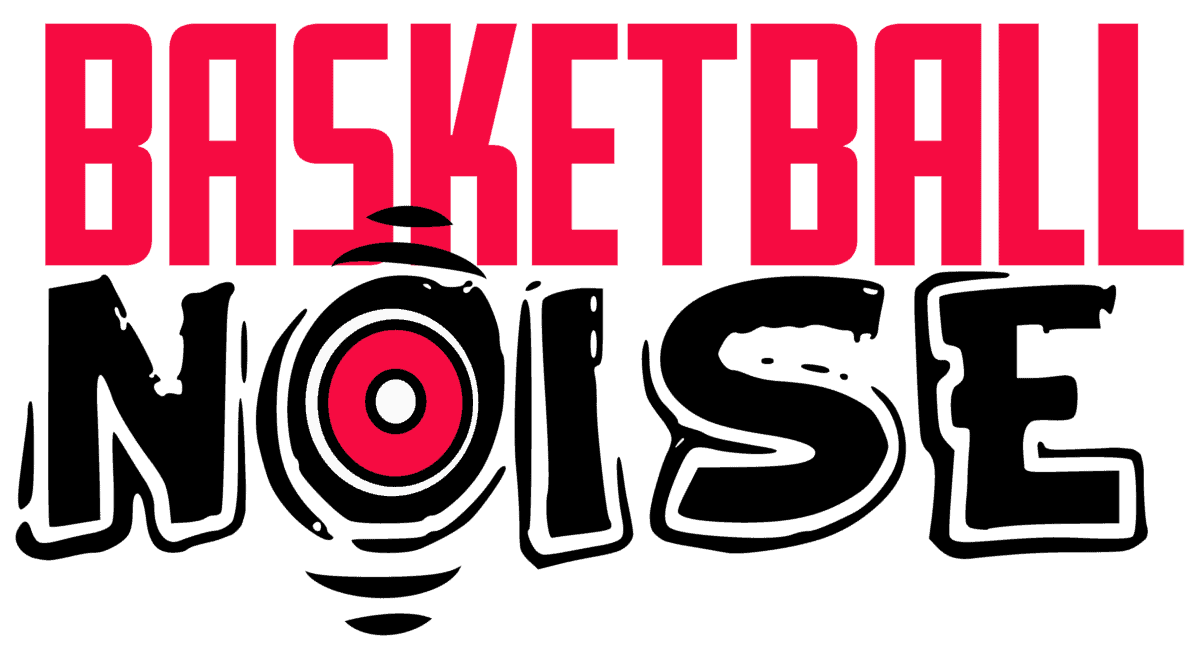The NBA has obviously been one of the most popular professional sports leagues in the world for some time now. However, it wasn’t always on top of the basketball world. Back then, another league called the ABA fought for player talent and fans’ eyeballs until it merged into the NBA in 1976.
What ABA Teams Merged With the NBA? There were four ABA teams that merged into the NBA in 1976. They were the Denver Nuggets, New York Nets, San Antonio Spurs and the Indiana Pacers. They each agreed to pay a $3.2 million expansion fee while the Nets had to pay an additional $4.8 million due to their proximity to the NBA’s New York Knicks.

That’s not all there is to know about the merger though. Let’s dive a little deeper on what happened throughout this defining period for professional basketball..
What Were The Effects On The Merged Teams?
Starting off with the Denver Nuggets, they were originally called the Denver Rockets in the ABA. However, when they heard the news that they were moving over to the NBA, they realized they needed to change their name due to the presence of the NBA established Houston Rockets. Shockingly, they were dominant in their first season and had a 50-32 record by the end of that year in their new league.
The San Antonio Spurs never once made it past the first round of the ABA playoffs, yet won their division in five of their first six seasons in the NBA when the move was finalized. It’s safe to say that they had no issue adjusting, just like the newly named Nuggets. They would go on to establish one of the most successful basketball dynasties around the turn of the Century led by Tim Duncan and coached by Greg Popovich. They have won 5 NBA titles and are currently the only former ABA team to have even won 1 NBA title.
The Indiana Pacers were always seen as the most attractive team in the ABA when it was still standing. However, when they were moved over the organization struggled heavily financially. They were only able to make it into a second season thanks to a fundraising telethon. Their attendance was strong, given the passion for Basketball in Indiana and they performed well on the court. The finances were what hurt them during the transition.
The New York Nets. Now look, all of these teams didn’t have the most money to work with being moved to a new league on top of getting a $3.2 million expansion fee. The Nets got it much worse than the others though because they had to pay another $4.8 million on top of that. The financial struggles forced them to sell the rights to star player and ABA crown jewel Julius Erving, a future Philadelphia 76ers legend, NBA MVP and Champion. That first year, they had the worst record in the league at 22-60. Their former owner Roy Boe said that the merger “killed the Nets as an NBA franchise.” They have drifted around the wider New York area, playing in New Jersey and now Brooklyn. With a walking bucket in, former MVP, Kevin Durrant on the roster it’s hoped their fortunes are finally going to change.
Teams That Didn’t Make It
Even though four teams from the ABA were able to make it into the NBA, two of them weren’t able to make it past the hurdles in front of them. The first team to fold was the Kentucky Colonels. They were considered one of the best franchises in the ABA back then and dominated attendance numbers. It looked like they were a slam dunk to make it into the merger but a few transactions got fans off their hype train. For example, they sent star player Teddy McClain to the New York Nets in exchange for $150,000 and then they sent Dan Issel away for $500,000. A large majority of their fan base didn’t appreciate the moves and started to support other teams. Still though, some believed that they had the talent to join the NBA. That was until the merger negotiations demanded that only four teams get accepted. The Nuggets and Nets were locked in place and at first glance the Colonels were set to follow. That was until the Chicago Bulls stepped into the negotiations and demanded that they stay away from the NBA due to encroaching on their fan base. They made a hefty push for Indiana to get pulled into the league instead and eventually the NBA took notice of their concerns and listened. The Colonels organization was eventually folded shortly after that. As for the second team, the Spirits of St. Louis were a rocky franchise. They flipped locations a number of times during their history, including trying to move to Salt Lake City, Utah. A merger was set in place for the Spirits to be merged into the Utah Rockies, though the Utah Stars franchise folded before everything was finished. Their attendance issues followed them and it was clear that the only teams in consideration for the NBA merger were essentially locked in, with the Bulls pushing for Indiana and the Colonels fighting for that final spot. The Spirits were given $2.2 million in cash in return for their franchise folding along with some other incentives. Outside of these two, four other teams collapsed before the merger was even being talked about. The Memphis Sounds moved to be the Baltimore Claws but folded after three preseason games. The San Diego Sails fell three weeks into the season. The Stars as we mentioned didn’t make it that long and finally the Virginia Squires due to selling away star players like Julius Erving and George Gervin lost a ton of popularity and fell apart.
Why Did The Merger Come About?
It might seem weird that a merge was even considered back then when talking about how many teams weren’t able to financially make it. However, there were reasons for this. The ABA wanted to follow in the footsteps of the American Football League as they merged with the National Football League. It gave people confidence that something of this nature could be done in their leagues and even help boost attendance ratings. The ABA went on for a few years before the NBA owners voted 13-4 in favor of working towards a merger. There were fierce negotiations because this was not a topic that could be overlooked. These talks went on for a few years as the basketball communities anxiously awaited the merger to take place. One of the reasons for it being pushed back for so long was because of something called the Oscar Robertson lawsuit. The legal fight against a possible merger went on for a while but eventually got settled in 1976. The obstacles that were faced because of this were all over the place, but the two sides eventually found even ground to make it happen.
